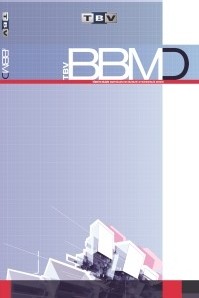Bilgi Güvenliğinde Uygun Risk Analizi ve Yönetimi Yönteminin Seçimi İçin Bir Yaklaşım
A New Approach for Choosing Proper Risk Analysis and Management Method in Information Security
___
- ISO/IEC. ISO/IEC 17799 International Standard, Information technology, 2000. Code of pactice for information security management, Switzerland.
- Aime, M. D., Atzeni A., Pomi, P. C., 2007. AMBRA: Automated Model-based Risk Analysis, QoP ’07: ACM workshop on Quality of protection.
- Swanson, M., Guttman, B., 1996. Generally Accepted Principles and Practices for Securing Information Technology Systems, NIST Special Publication 800-14.
- NIST. NIST, An Introduction to Computer Security: The NIST Handbook, NIST Special Publication 800-12.
- Dhillon, G. (Repasky, N.), 2007. Principles of Information System Security, Wiley, USA.
- Blakley, B., McDermott, E., Geer, D., 2001. Information security is information risk management, NSPW '01: Proceedings of the 2001 workshop on New security paradigms.
- Karabacak, B., Sogukpinar, I., 2004. ISRAM: Information Security Risk Analysis Method, Computers & Security, 24(2), 147-129.
- Bella, G., Bistarelli, S., Peretti, P., Riccobene, S., 2007. Augmented Risk Analysis, Electronic Notes in Theoretical Computer Science, Volume 168, Pages 207-220.
- Vorster, A., Labuschagne, L., 2005. A framework for comparing different information security risk analysis methodologies, Proceedings of the 2005 annual research conference of the SAICSIT '05.
- UK Central Computer and Telecommunication Agency (CCTA), 2001. Risk Analysis and Management Method, CRAMM User Guide, Issue 2.0.
- Braber, F., Hogganvik, I., Lund, M.S., Stolen, K., Vraalsen, F., 2007. Model-based security analysis in seven steps - A guided tour to the CORAS method, BT Technology Journal, v 25, n 1, p 101-117.
- ISSN: 1305-8991
- Başlangıç: 2005
- Yayıncı: Türkiye Bilişim Vakfı
Şirketlerde Elektronik İmza Kullanımı Üzerine Bir Uygulama
Aort Anevrizması Tedavisi için Görüntüsel Modelleme ve Ölçümleme Aracı
Semih Utku, Hulusi Baysal, Mustafa Tosun, R. Alp Kut
Örüntü Tanıma ve Öznitelik Seçme Yöntemleri Kullanarak Kısa Zaman Sonraki Yol Trafik Hız Öngörüsü
Ülkem Yıldırım, Zehra Çataltepe
Serpiştirim Yaklaşımının MBMS Yükleme Hızına Etkisi
Bilgi Güvenliği Yönetiminde Risk Değerlendirmesi İçin Bir Model
Hidayet Takçı, Türker AKYÜZ, Alper UĞUR, Rahim Karabağ, F. Özden AKTAŞ, İbrahim SOĞUKPINAR
Bilgi Güvenliğinde Uygun Risk Analizi ve Yönetimi Yönteminin Seçimi İçin Bir Yaklaşım
F. Özden Aktaş, İbrahim Soğukpınar
Türkçe Dokümanlar İçin N-gram Tabanlı Yeni Bir Sınıflandırma(Ng-ind): Yazar, Tür ve Cinsiyet
